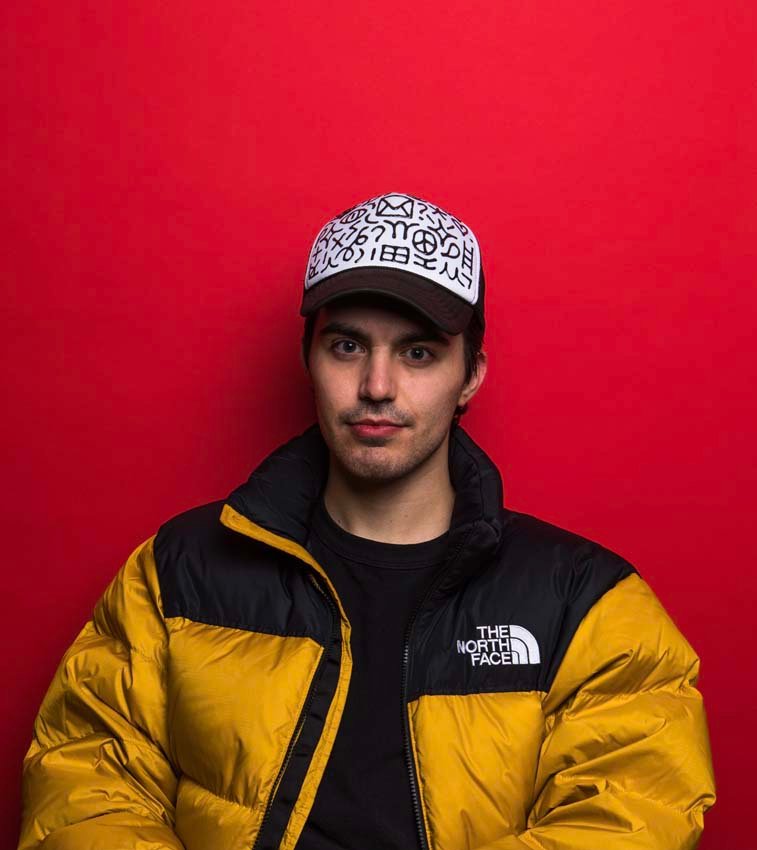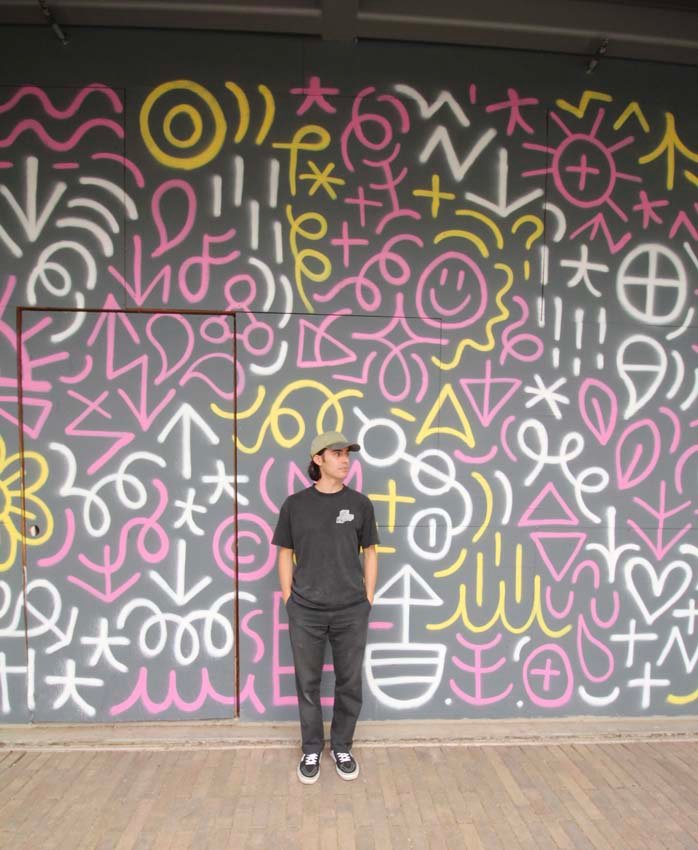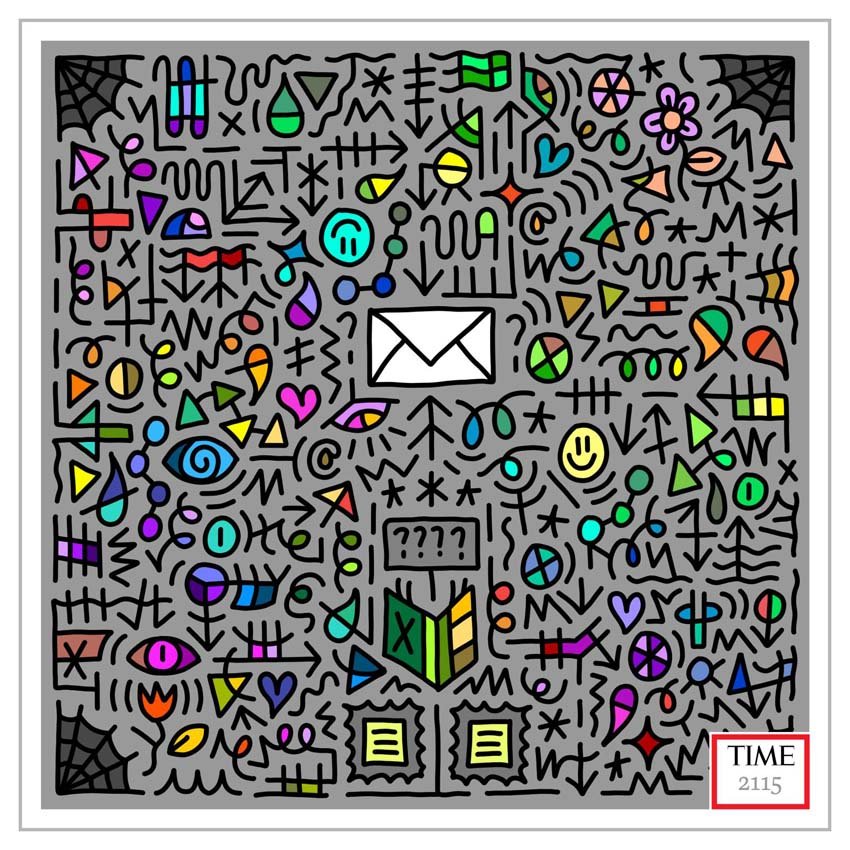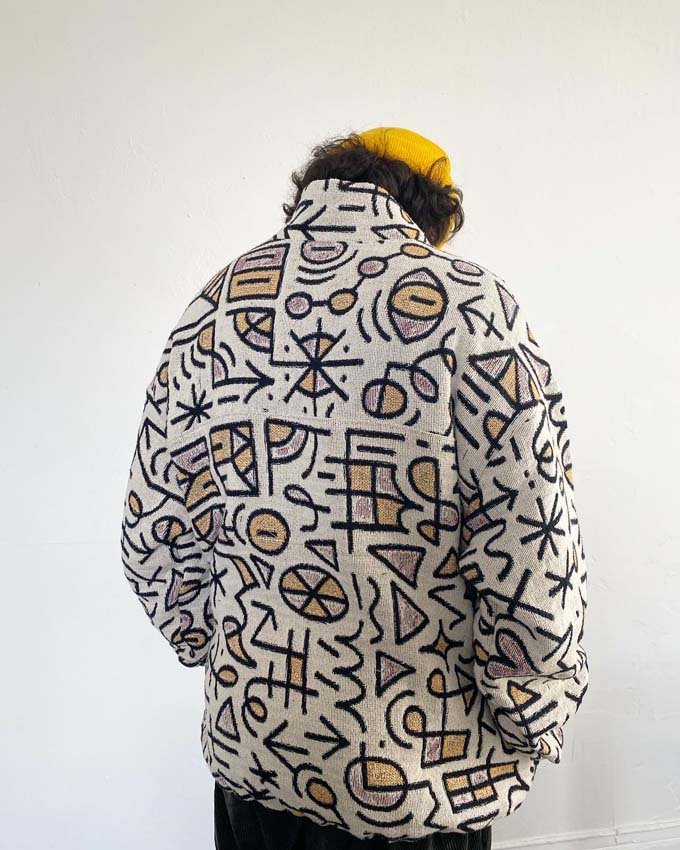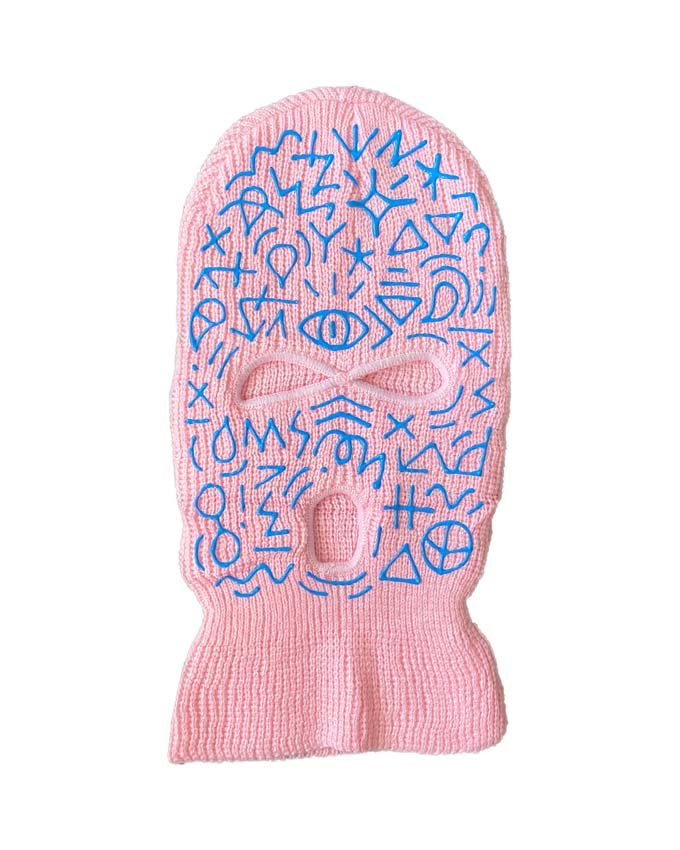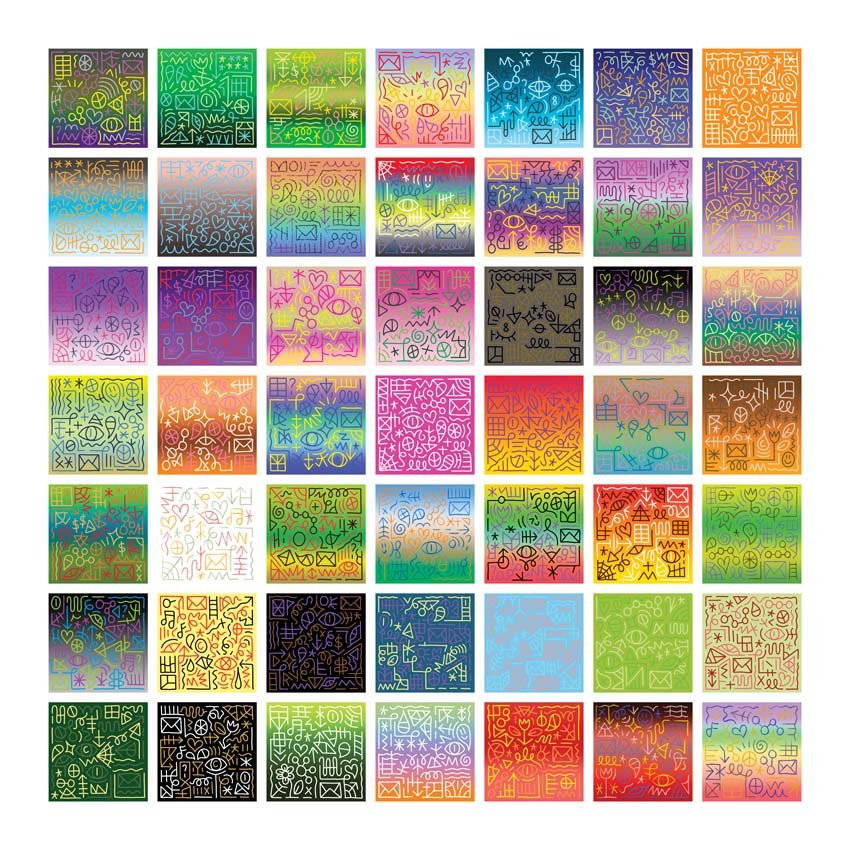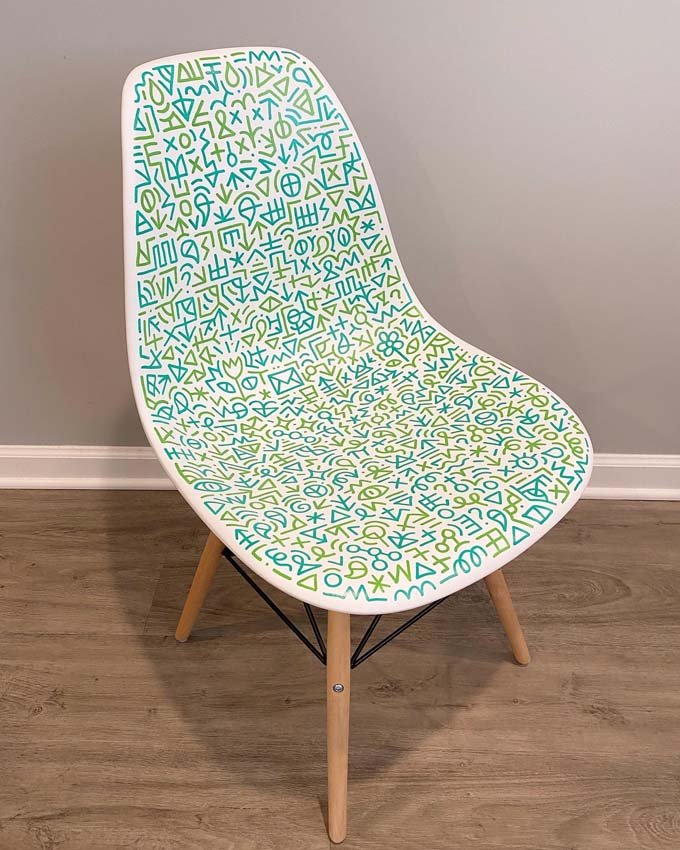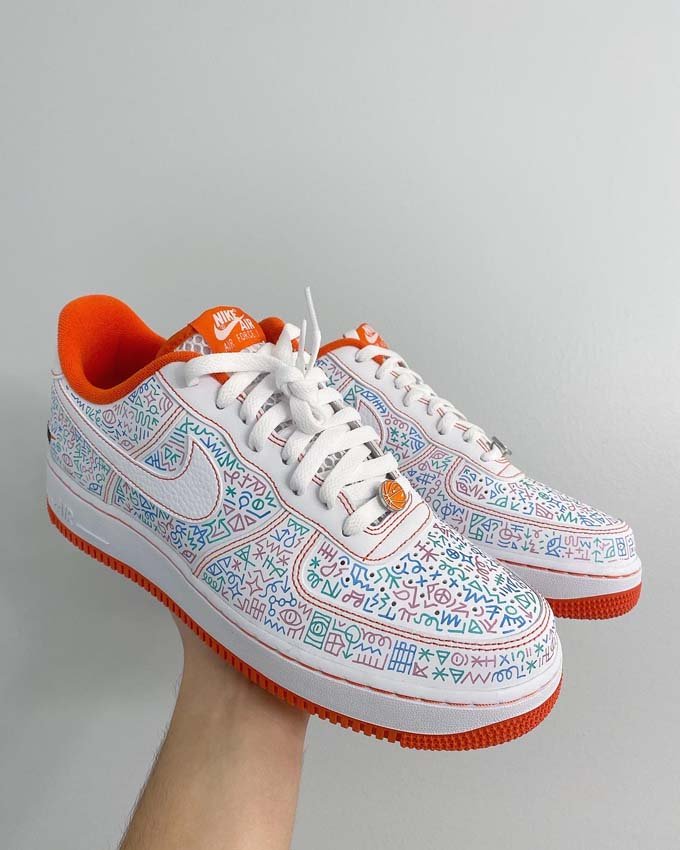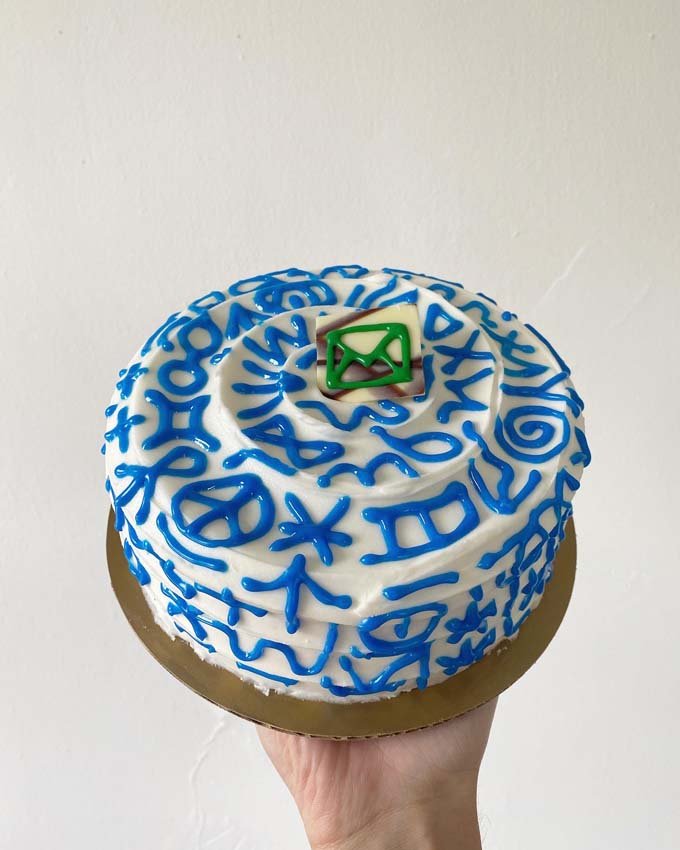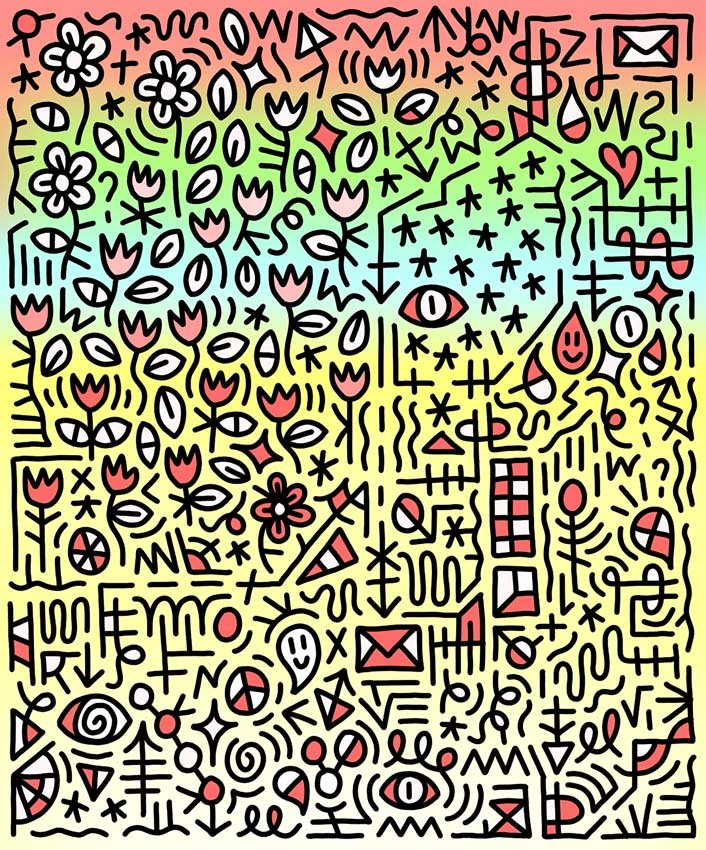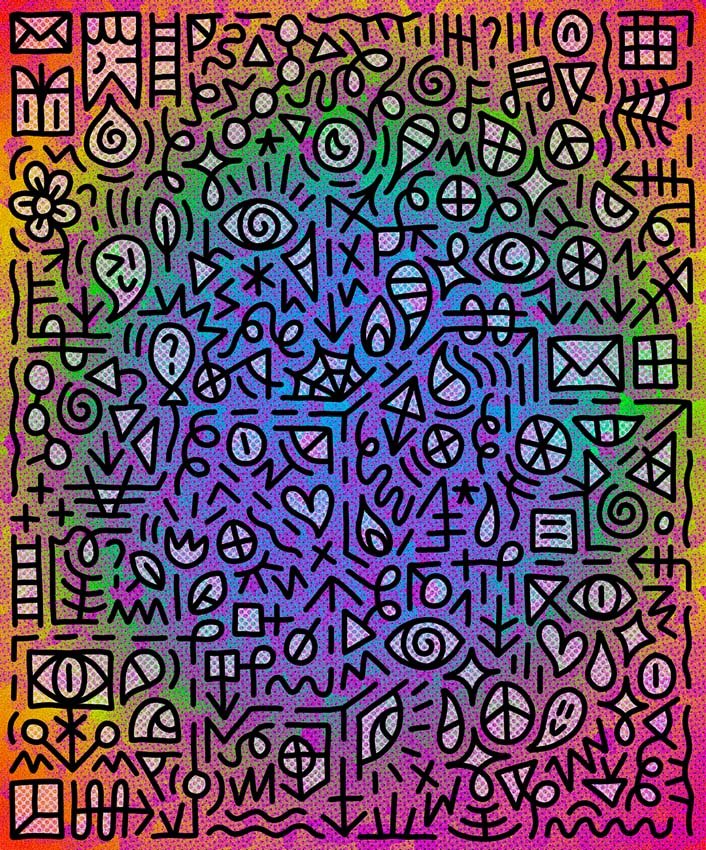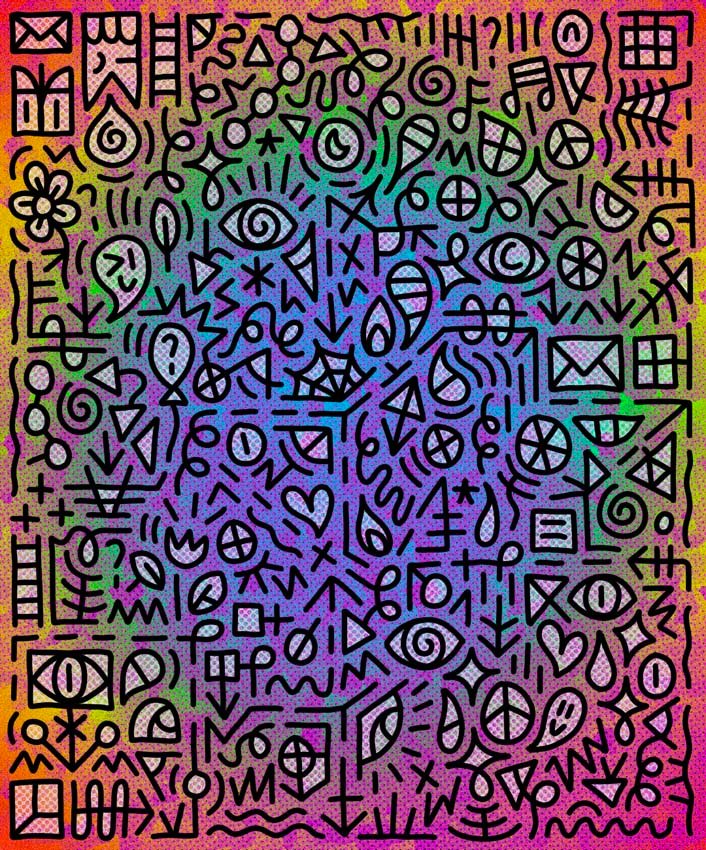+ By Andrew Guckes + Photos courtesy of Vinnie Hager
Vinnie Hager has always had the urge to create, but the keen business acumen that has skyrocketed him to the upper echelons of the Web3 (a new iteration of the web that includes blockchain currencies) art community was something he had to learn. “In school, I would draw on handouts and little canvases, and in middle school, people started to notice them and would, like, buy one for $25 or something,” he says. “So that got me excited to keep doing it, and keep doing it, and keep doing it-—and just explore other mediums.”
Those familiar with the art community in Annapolis or Baltimore have likely seen Hager’s signature designs around the region. They are clean, two-dimensional, almost hieroglyphic figures of everything from eyes to abstract shapes covering public murals, clothing, furniture, skateboards, and more. His ascendance in the fine art world has been largely due to his online work, specifically, his “Letters” non-fungible token (NFT) collection, which features 1,000 separate Letters, as he calls them—square NFTs with a series of Hager’s designs drawn inside.
The floor price of this collection currently sits above 1.0 ethereum, which is worth just over $1,000. The most expensive Letter, called “Vindenza,” at one point sold for 32 ethereum. Needless to say, Hager feels pretty good right now. “I think the most exciting thing is that I just got signed to United Talent Agency,” he says, “so I have been on calls with different companies and brands and artists and collaborators to talk about projects that I can be involved in that will bring my artwork up to another level.”
Hager isn’t ready to tease anything yet, but he anticipates that these collaborations will mark a transition in his career toward more official partnerships. Until now, the only brand that Hager has teamed up with is the Annapolis-based Pure Board Shop, where he previously worked and sold some of his products. He credits his time spent there and in the region’s skateboarding scene in helping shape his creative pursuits.
“I worked at Pure for, like, five years, and whether it was a dad getting a skateboard for his son or someone who’s been skating for 35 years, I was exposed to all these different walks of life,” he says. “And just being able to talk about skating as a creative expression with customers and with a close friend group of skaters in Annapolis was always super exciting to me.”
On occasion, Hager, whose studio space is in Baltimore, still sells skateboard grip tape or decks at Pure, although his website is the primary marketplace for his numerous physical products. Sometimes it’s hard to keep track of how many projects Hager has going simultaneously. “I’ve often said I have the opposite problem of artist’s block,” he laughs. “I have too many ideas and not enough hours in the day to execute all of them.”
Hager was recently included in Time magazine’s “Slices of Time” project, in which 38 artists paired up to illustrate two years, 100 years apart, in their own way. Hager depicted the year 2115 in his signature style, asking in his statement for the piece if physical (USPS) mail will still be used by then: “How will the encroaching metaverse affect the physical forms of mail? I’m hoping for a bright future, but technology continues to overcome these older forms of communication—time will tell.”
Hager believes that NFTs are a good way to empower artists, and he thinks a lot about the future of the art world. While his success on Web3 might be emblematic of the current state of the online art world, he takes a pragmatic view toward the medium that made him famous. “I think there is a sentiment going around that, one day, 80 to 90 percent of NFTs right now will be worth nothing, which might be true. But there’s going to be this 10 percent of those that will survive, and those are the people who are pushing boundaries and thinking outside the box,” he says. “When you boil it down, there are going to be some really impactful people, thinkers, builders, artists, and creators that come out of these last two or so years [of Web3].”
At its core, the NFT is still a revolutionary invention, according to Hager. “I do think that probably, the technology [behind NFTs] will be used in everything—an airline ticket or a concert ticket will be an NFT, for example,” he says. His knowledge of NFTs he says comes purely from “falling down the rabbit hole and saying ‘yes’ to everything.”
Although Hager has degrees from AACC and MICA, he believes that the most important aspect of his art education was finding out what inspired him to create and working tirelessly toward that. “I think, if you want to be a painter or some type of art graphic designer or you don’t really know what you want to do, it’s great, and you should go to school and ask questions and take it all in. But if you’re in the groove of what you’re building and you know what you’re doing, it’s definitely not that important,” he says. “Plus, it costs a buttload of money,” he adds with a laugh.
Even as he becomes more renowned and acclaimed, he is still a Maryland skateboarder at heart. He has kept this perspective through the early stages of fame. “I rarely look down,” he says.” I’m just the guy that likes to draw, I guess.” █
For more information,
visit vinniehager.com.
